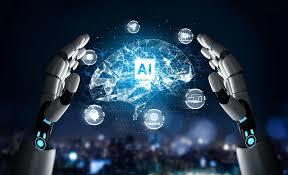
Biometric Scan And Artificial Intelligence: Endgame Of Fears And Doubts
When combined, biometric scans and AI create a powerful duo capable of achieving remarkable achievements from Enhancing Accuracy: AI algorithms can analyze biometric data with unparalleled precision, reducing the likelihood of false positives or negatives. For instance, AI-powered facial recognition systems can distinguish between individuals even when their faces are partially obscured or altered.
Real-time Processing as AI enables near-instantaneous processing of biometric data, making it suitable for applications that require rapid identification, such as border control and law enforcement in addition to that Intelligent Adaptation: AI can learn from biometric data over time, adapting to changes in an individual's appearance or behavior. This is particularly useful in scenarios where biometric characteristics may evolve, such as aging or weight fluctuations.
Fraud Detection: AI can detect anomalies in biometric data that may indicate fraudulent activity because AI-powered systems can identify attempts to spoof fingerprint sensors using artificial replicas. Multi-modal Authentication: AI allows for the combination of multiple biometric modalities, such as facial recognition, fingerprint scanning, and iris recognition, to create a more robust and secure authentication system.
Biometric scans can provide secure access to buildings, offices, and other restricted areas. From Payment Systems, Biometric authentication can eliminate the need for physical cards or passwords in payment transactions to Healthcare sector ,Biometric data can be used for patient identification, drug administration, and health monitoring also in law enforcement: Biometric scans can aid in criminal investigations, identification of missing persons, and border control.
Smart Homes become more and more widespread as biometric authentication can provide convenient and secure access to smart home devices.
Ethical Considerations & High Risks:
While the benefits of biometric scans and AI are substantial, it is essential to address the ethical concerns associated with their use. These include privacy, data security, and the potential for discrimination. Governments, businesses, and individuals must work together to develop responsible guidelines and regulations for the deployment of biometric technologies.
The convergence of artificial intelligence (AI) and biometric technology has led to significant advancements in identity verification and security. However, this synergy also presents new opportunities for malicious actors to exploit biometric data.
Deepfakes and Spoofing: AI-generated deepfakes can create highly realistic synthetic biometric data, such as faces or voices, that can be used to deceive biometric systems. Also spoofing attacks involve using fabricated biometric data to bypass authentication systems. For example, a hacker could create a 3D printed fingerprint or a synthetic voice to gain unauthorized access.
Data Breaches and Theft can be prevailed as large-scale data breaches can expose sensitive biometric information, which can be used for identity theft, blackmail, or other malicious purposes beside unauthorized access to biometric databases can allow hackers to steal and misuse individuals' biometric data.
Surely, we can't ignore Bias and Discrimination rooted in AI algorithms if trained on data that is not representative of the population. This can lead to discriminatory outcomes, such as inaccurate identification or exclusion of certain groups. Biometric systems may be more susceptible to errors for individuals with certain physical characteristics or skin tones, exacerbating existing biases.
Mass Surveillance and Privacy Concerns as widespread deployment of biometric systems can raise concerns about mass surveillance and privacy violations. Government agencies may use biometric data to track individuals without their consent, leading to a loss of privacy and civil liberties.
Ethical questions arise regarding the use of biometric data, such as consent, ownership, and the potential for exploitation. The misuse of biometric data can have serious consequences for individuals, including financial loss, reputational damage, and emotional distress. To mitigate these risks, it is essential to develop robust security measures to protect biometric data from unauthorized access and breaches.
Also, we need to implement ethical guidelines for the use of biometric technology, including data privacy and consent requirements. Tech Experts must promote diversity and inclusion in the development and training of AI algorithms to reduce bias. Media must raise awareness about the risks of biometric hacking and educate individuals on how to protect their personal information.
By addressing these challenges proactively, we can harness the benefits of AI in biometric technology while minimizing the risks to individuals and society. In conclusion, the combination of biometric scans and AI has the potential to revolutionize the way we interact with technology and each other. By leveraging the power of these technologies, we can create a more secure, convenient, and efficient world.
Dr. Sara Fawzy Ahmed – Assistant Professor – Mass Communication, Cairo University

Legal Disclaimer:
MENAFN provides the
information “as is” without warranty of any kind. We do not accept
any responsibility or liability for the accuracy, content, images,
videos, licenses, completeness, legality, or reliability of the information
contained in this article. If you have any complaints or copyright
issues related to this article, kindly contact the provider above.



















Comments
No comment